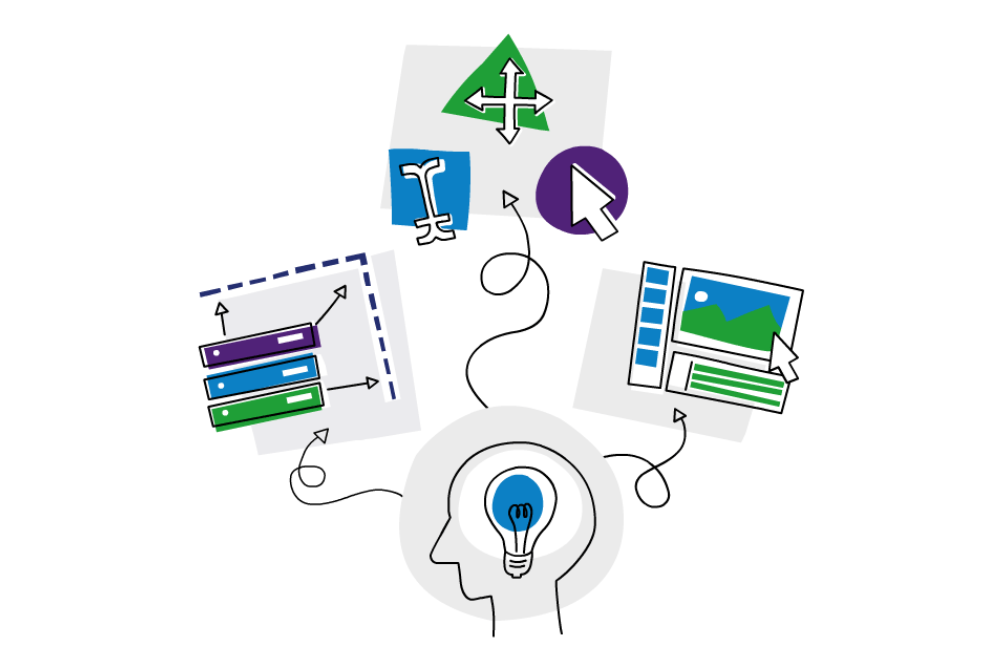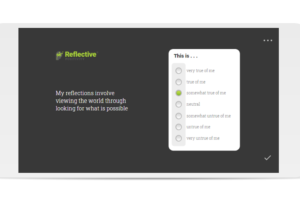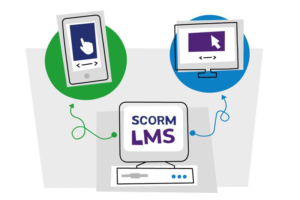
Starting from Scratch with eLearning Design
When organisations first decide to create an eLearning program, the biggest challenge isn’t usually the technology but knowing where to start. With so many tools, design considerations, and delivery options, it can be overwhelming to go from a blank page to an eLearning course that learners actually enjoy and complete.
At B Online Learning, our approach is simple: deliver intuitive, scalable, and adaptable eLearning. To do that, we build every course around three key elements: Instructional Design, Visual Design, and Functional Design. These pillars ensure that knowledge is effectively transferred and retained, while also aligning learning goals with the cognitive, demographic, technical, and skill levels of your audience.
So, if you’re starting from scratch, let’s walk through how to plan your course with these three elements in mind and how tools like Articulate Storyline and Rise can help you bring everything together.
Why Starting with a Clear Framework Matters
The temptation when beginning an eLearning project is to dive straight into building slides, writing quiz questions, or trying out fancy animations. But without a framework, the course risks becoming a collection of features rather than a meaningful learning journey.
By deliberately focusing on instructional, visual, and functional design from the start, you:
- Ensure that learning objectives drive the content (not the other way around).
- Build an experience that looks professional and reflects your brand.
- Provide smooth, accessible usability for all learners, across devices and LMS platforms.
This is how eLearning shifts from being just “online information” to becoming a powerful, engaging, and performance-focused solution.
1. Instructional Design: Structuring for Learning
At its core, Instructional Design is about developing structured content that facilitates effective learning. It’s the blueprint that answers: What should learners be able to do differently after this course?
Key Principles
- Define clear learning outcomes: Keep them short, specific, and measurable. For example: “Apply the company’s privacy policy when handling client data.”
- Sequence content logically: Move from simple concepts to more complex applications.
- Blend information with practice: Instead of just explaining, include activities that let learners apply knowledge.
- Respect learner time: Keep modules focused. A 15-minute, high-impact course is often more effective than an hour-long lecture.
Choosing the Right Tool
- Rise 360: Ideal for structured, modular content. It encourages short, scrollable sections that mirror how people naturally consume information online. Perfect for onboarding programs, compliance topics, or policy-driven modules.
- Storyline 360: Best when you need complex interactivity, branching scenarios, or realistic simulations. Use it to build “choose your own path” style modules or practice environments where learners can make mistakes safely.
Instructional Design in Action
Imagine designing a course on workplace safety. In Rise, you might create an easy-to-follow pathway with checklists, FAQs, and quick knowledge checks. Then, you could embed a Storyline block that simulates a safety hazard scenario, letting learners practice choosing the right response.
This combination keeps the learning structured while still adding depth and realism.
For a deeper dive, read our four part series The B Model – A Modern Framework for Learning Design.
2. Visual Design: Shaping the Learner Experience
Visual Design is often underestimated, but it’s central to how learners engage with your course. Good design isn’t just decoration, it’s about creating clean, intuitive, and visually engaging experiences that guide learners through content seamlessly.
Key Principles
- Consistency builds trust: Align the course with your organisation’s brand colours, fonts, and tone.
- Hierarchy directs attention: Use headings, imagery, and spacing to help learners quickly spot the most important information.
- Accessibility matters: Apply WCAG standards, ensuring colour contrast, clear typography, and descriptive alt text for all visuals.
Choosing the Right Tool
- Rise 360: Provides elegant, responsive layouts that look polished on desktop, tablet, and mobile without additional design work.
- Storyline 360: Offers full creative control. You can build custom templates, interactive characters, and animations tailored to your organisation’s style.
Consider Animation
Animation should always serve a purpose. The best visual effects are those that help learners understand or remember concepts.
- Micro-animations (fades, slide-ins) highlight transitions without overwhelming.
- Illustrated explainer videos (using Storyline’s motion paths or external tools like Adobe After Affects) simplify complex processes.
- Character animations can humanise content and make scenarios more relatable.
Visual Design in Action
Take the example of a fraud awareness course. In Rise, you might present the structured content with timelines and labelled graphics. Then in Storyline, you could animate a scenario where a character notices suspicious transactions, showing learners how to respond step-by-step. The visuals reinforce the message, making it more memorable.
3. Functional Design: Ensuring Usability and Accessibility
Even the best instructional content and visual design fall flat if the course doesn’t work smoothly. Functional Design is about ensuring seamless usability across devices and platforms while meeting accessibility standards.
Key Principles
- Navigation should feel effortless: Learners should never wonder “Where do I click next?”
- Responsive design is non-negotiable: Courses must work on desktops, tablets, and phones.
- Accessibility is inclusive: WCAG-compliant courses ensure that learners with disabilities can engage equally.
- Tracking delivers insights: Decide what success looks like (completion, quiz scores, xAPI data) and configure the course accordingly.
Choosing the Right Tool
- Rise 360: Automatically responsive and accessible, with simple tracking options (completion or quiz scores).
- Storyline 360: Gives you advanced control over navigation and SCORM/xAPI reporting. You can customise triggers for course completion or report granular quiz results.
Functional Design in Action
For example, when designing a performance review training course, you might use Rise for straightforward navigation and tracking completion. If you want to track learner decisions in a scenario (e.g., choosing the right feedback technique), Storyline allows you to send that data to the LMS for deeper reporting.
This ensures the course isn’t just functional, it provides actionable insights back to the organisation.
Bringing the Three Elements Together
When you combine Instructional, Visual, and Functional Design, you create courses that are not only engaging but also purposeful. Here’s how they align in practice:
- Instructional: Clear learning outcomes and a logical structure.
- Visual: Clean design and accessible layouts that reinforce the message.
- Functional: Seamless usability, reliable tracking, and compliance with accessibility standards.
By intentionally weaving these elements together, you shift eLearning from a box-ticking exercise into a powerful enabler of performance and culture.
One of the strengths of Articulate 360 is that you don’t have to pick just one tool. Each serves a distinct purpose:
- Rise 360: Best for intuitive, scalable, and mobile-friendly courses with clean layouts.
- Storyline 360: Best for adaptable, highly interactive experiences with animation, scenarios, and customisation.
- Both Together: The sweet spot. Use Rise for structure and Storyline blocks for depth and interactivity.
This blended approach allows you to build courses that meet learners where they are and scale with organisational needs.
Practical Tips for Starting from Scratch
If you’re completely new to designing eLearning, here are some steps to kickstart your first project:
- Clarify your “why”: Define the problem the course is solving.
- Draft learning outcomes: Make them actionable, measurable, and relevant.
- Storyboard before you build: Sketch the flow of content and interactions.
- Select the right tool: Choose Rise, Storyline, or a combination depending on your needs.
- Prototype quickly: Build a short sample module to test design and navigation.
- Test accessibility early: Check colour contrast, keyboard navigation, and screen reader compatibility.
- Pilot with real learners: Gather feedback before full rollout.
Final Thoughts
Starting from scratch with eLearning may seem daunting, but when you focus on the three design elements – Instructional, Visual, and Functional – you create a strong foundation. Pair this with the flexibility of Articulate tools and purposeful animation, and you can deliver courses that are intuitive, scalable, and adaptable.
Remember, learners don’t measure success by how sophisticated the tool is or how slick the animation looks. They measure it by whether they leave the course more capable, more confident, and more connected to their work.
At B Online Learning, that’s our mission. From building award-winning custom eLearning courses to delivering Certified Articulate training, we help organisations transform ideas into engaging learning experiences. If you’re ready to start your journey from scratch, get in touch with us today.
Source link



